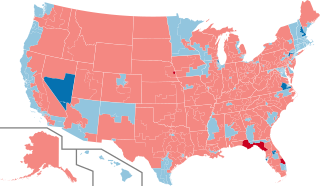Gary Kiehne
|
|
|||||||||||||||||||||||||||||||||||||
|---|---|---|---|---|---|---|---|---|---|---|---|---|---|---|---|---|---|---|---|---|---|---|---|---|---|---|---|---|---|---|---|---|---|---|---|---|---|
|
|||||||||||||||||||||||||||||||||||||
|
All 435 seats in the United States House of Representatives 218 seats needed for a majority |
|||||||||||||||||||||||||||||||||||||
| Turnout | 54.7% of total eligible | ||||||||||||||||||||||||||||||||||||
|
|||||||||||||||||||||||||||||||||||||

Results:
Democratic hold
Democratic gain
Republican hold
Republican gain
|
|||||||||||||||||||||||||||||||||||||
|
|||||||||||||||||||||||||||||||||||||
The 2016 United States House of Representatives elections were held on November 8, 2016 to elect representatives for all 435 congressional districts across each of the 50 U.S. states. Non-voting members for the District of Columbia and Territories of the United States were also elected. These elections coincided with the election of President Donald Trump. The winners of this election serve in the 115th Congress, with seats apportioned among the states based on the 2010 United States Census. In October 2015, the House elected a new Speaker, Republican Paul Ryan, who was re-elected in the new term. Democrat Nancy Pelosi continued to lead her party as Minority Leader.
Elections were also held on the same day for the U.S. Senate, many Governors, and other state and local elections.
...
Wikipedia


